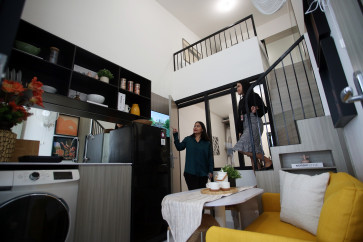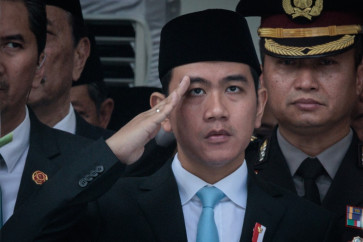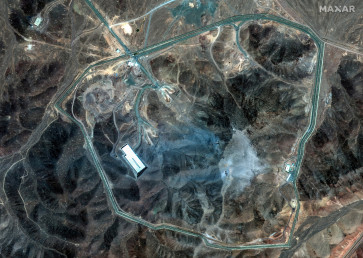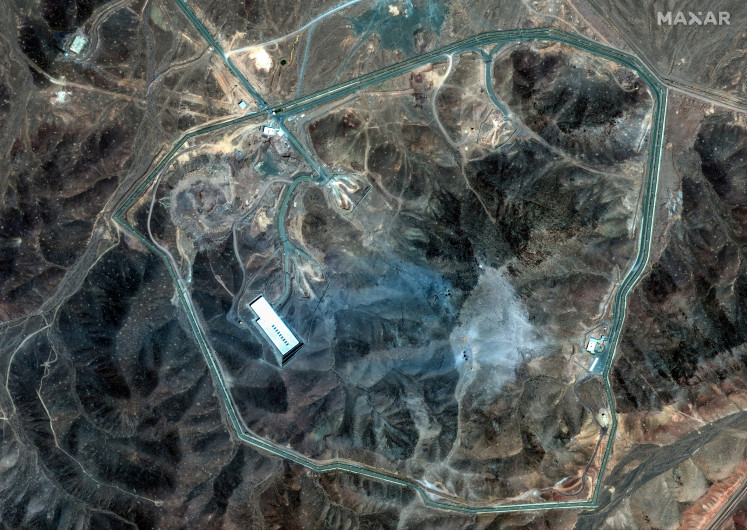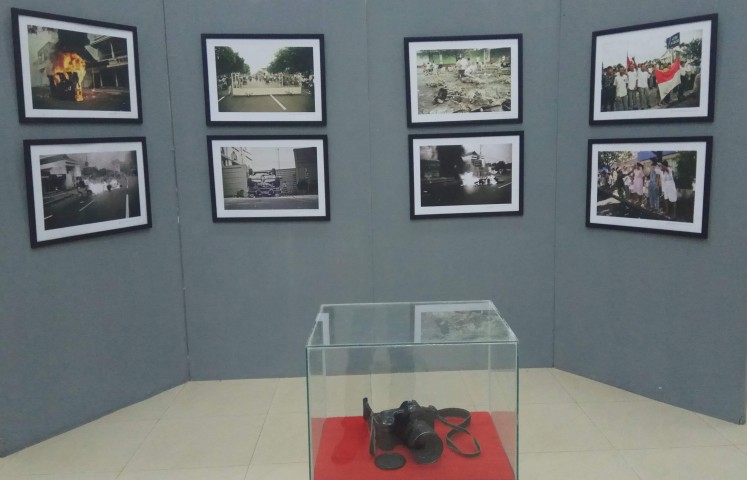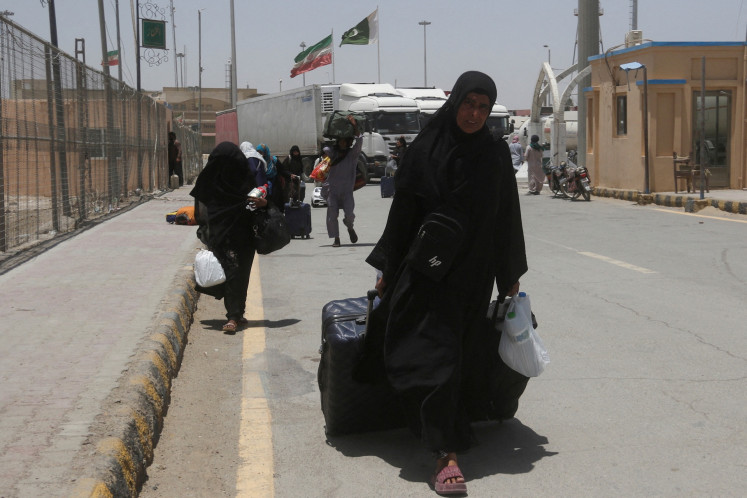Popular Reads
Top Results
Can't find what you're looking for?
View all search resultsPopular Reads
Top Results
Can't find what you're looking for?
View all search resultsIndustrial estate development to promote manufacturing in RI
Change text size
Gift Premium Articles
to Anyone
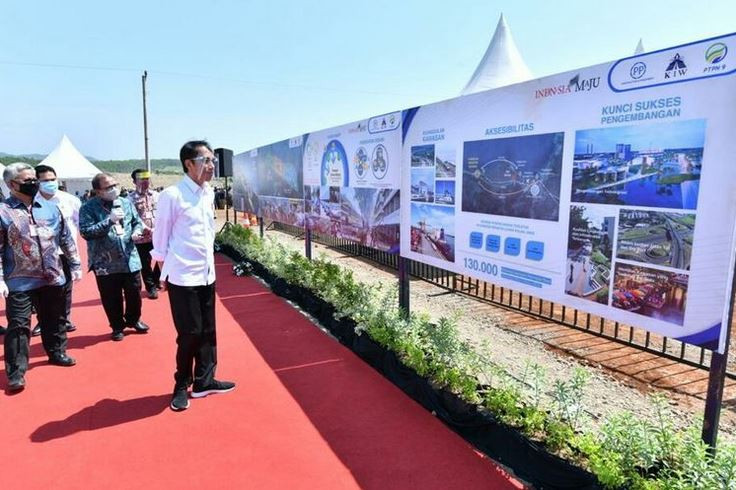
T
he future of Indonesian manufacturing lies in the development of industrial estates to support the growth of the sector. Such estates provide more efficient use of infrastructure and manufacturing facilities to enhance production while minimizing environmental impacts.
However, industrial estate development in Indonesia has multidimensional challenges that require proper planning.
In recent years, the government has been very supportive of the growth of industrial estates. The Job Creation Law requires manufacturing activities in an industrial estate. The law also demands a certain area for small and medium enterprises (SMEs) so that industrial estates can benefit local economic activities.
Moreover, under the Medium-Term National Development Plan (RPJMN) for 2020-2024, the government will facilitate 27 additional industrial estates throughout Indonesia. It should be noted that the latest data from the Industry Ministry shows there are 135 industrial estates, and that number is expected to increase following massive investment in the manufacturing sector.
The proliferation of industrial estates is in parallel with the growing demand for manufacturing. Data from the Investment Ministry from January to September 2022 showed that foreign direct investment and domestic direct investment in the manufacturing sector were around US$18.1 trillion and $6.8 trillion, respectively, under the assumption of Rp 15,500 against the greenback. The figures were growing significantly by 52.4 percent and 66.5 percent year-on-year.
We believe that industrial estates in Indonesia will continue to prosper as they provide several advantages.
In the short term, the massive amount of investment in regions for the construction of industrial estates and their supporting infrastructure will jumpstart regional economic activities.
The construction of industrial estates will create jobs and increase money circulation. Several sectors, such as food and beverages and residential property, will also increase due to higher economic activities.
In the long term, industrial estates will boost manufacturing competitiveness. Industrial estates will create so-called “agglomeration economies”. As firms and people are located near each other, transportation cost will be considerably lower. The transportation costs themselves are defined in broader terms that include the exchange of goods, people and ideas. Thus, it allows for more efficient production activities.
On top of that, the agglomeration of industries will increase the utilization of infrastructure, whether it is a road, port or airport, to distribute the goods produced within an estate. This will reduce the infrastructure’s payback period.
There are two types of industrial estates typically found in Indonesia.
The first type is an industrial estate for high-end manufacturing, which requires higher-skilled labor and usually has better access to the market. This type of industrial estate can mostly be found in Java, particularly near big cities.
The second one is an industrial estate that is specifically built to process commodities, such as nickel, bauxite, copper, crude palm oil and rubber. The main objective of this industrial estate is to acquire raw materials economically and process them further down the value chain. This type of industrial estate is usually found outside Java, such as for nickel in Morowali, Central Sulawesi and Halmahera, North Maluku.
However, the development of industrial estates has many challenges.
First, industrial estates need to have proper connectivity and be integrated into the domestic and/or global market. This enables more efficient transportation costs, which includes the cost of permits, administration and logistics.
For high-end manufacturing, such costs will be one of the determining factors for tenants in choosing their production base. In the case of Indonesia, the limited connectivity in the past decade caused the country to lose the competition to attract investment from other countries, such as Vietnam. As for commodity processing manufacturing, the determining factor will be access to raw materials.
Second is the limited access to skilled laborers. This is often the main reason for relatively slow manufacturing development for higher-end industries. Even if companies choose to build their plants, most manufacturers will end up hiring skilled workers from other regions.
Third, there are unequal facilities between industrial estates. Several industrial estates are gaining more favors from the government, particularly those managed by state-owned consortiums. In an extreme case, the Batang Integrated Industrial Estate (KITB) in Central Java gains the most favor from the government, creating unfair competition between industrial estate players. However, the government said that the KITB was built specifically to compete with other countries rather than with other domestic players. The favors include cheaper rent, easier permits and tax incentives from the government.
Conversely, some industrial estate players act as landlords without providing the necessary facilities. This case is usually found at industrial estates that have locational advantages, such as near a city with a high population density.
Fourth, industrial estates require comprehensive planning. Without proper planning, industrial estates may grow sporadically. The moment they reached their capacity, the firms responsible for managing industrial estate might opt to widen the area, which may not be suitable for industrial activities. Thus, it may harm the environment, specifically when done without an Environmental Impact Analysis (AMDAL).
We believe the development of industrial estates should be conducted comprehensively, comprised of detailed AMDALs, aligned with both central and regional government spatial plans and located strategically based on the targeted tenants. Through comprehensive planning, the developer might provide supporting facilities and infrastructure based on the targeted manufacturers. Furthermore, the government should monitor the industrial estates periodically to ensure their compliance.
*****
The writer is an industry and regional analyst at Bank Mandiri.

